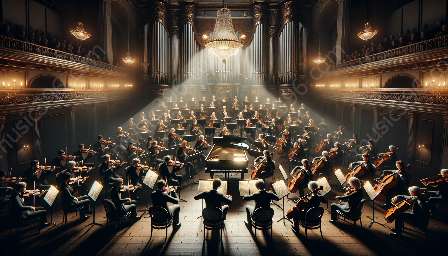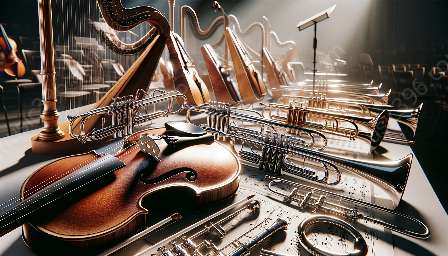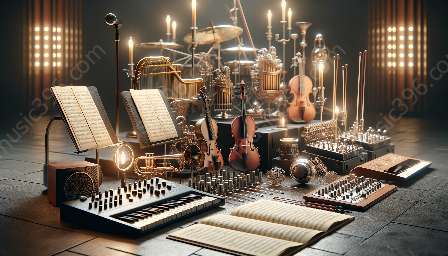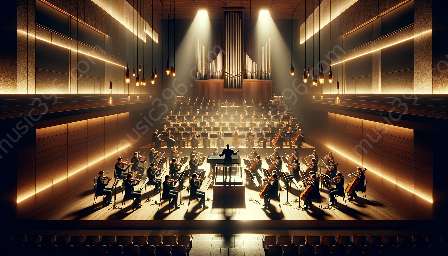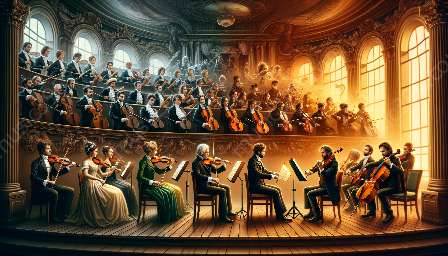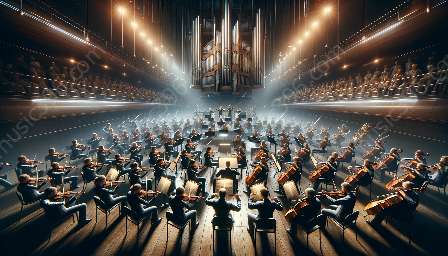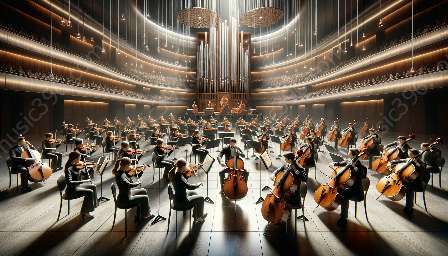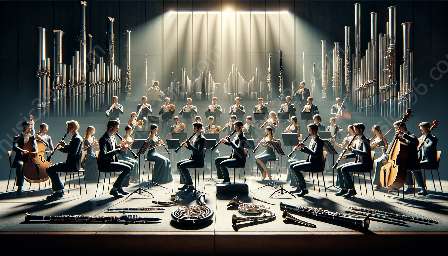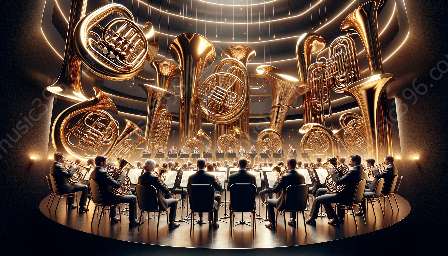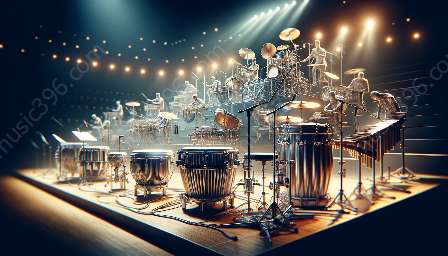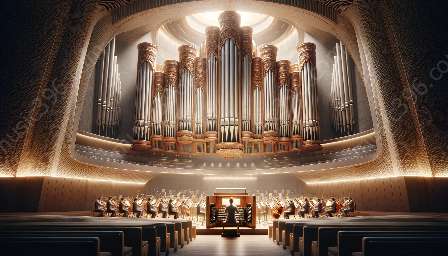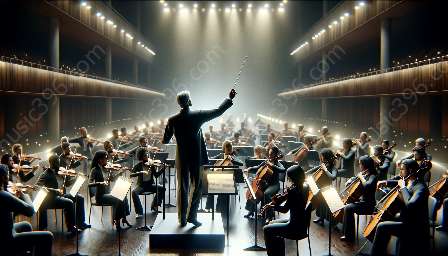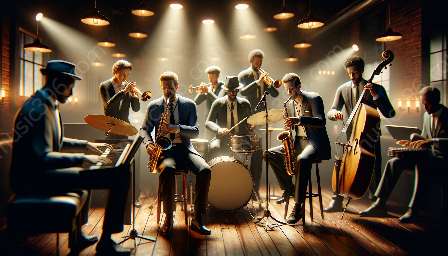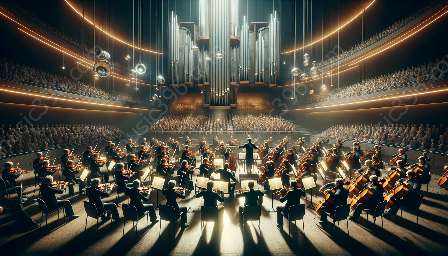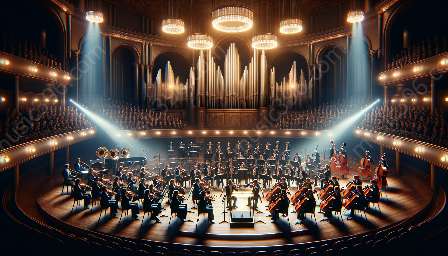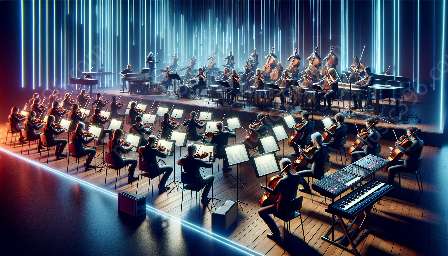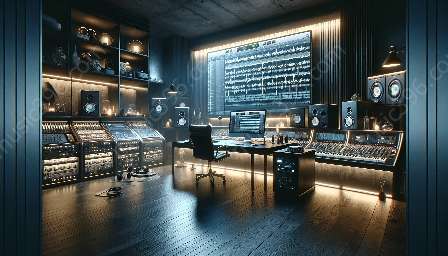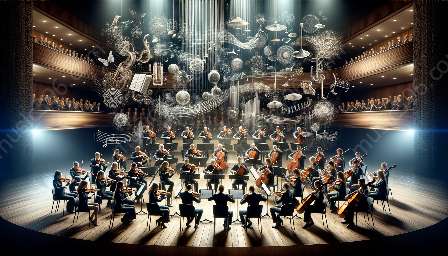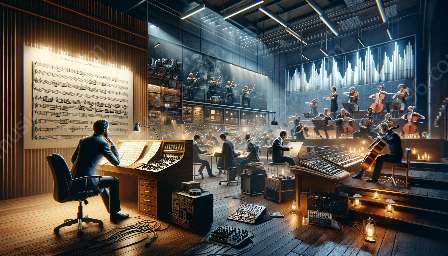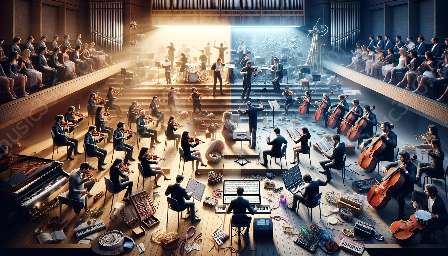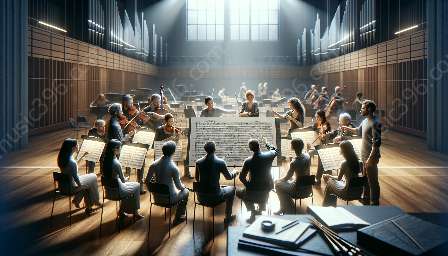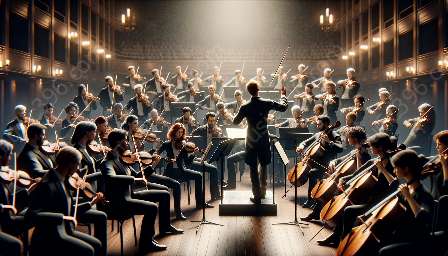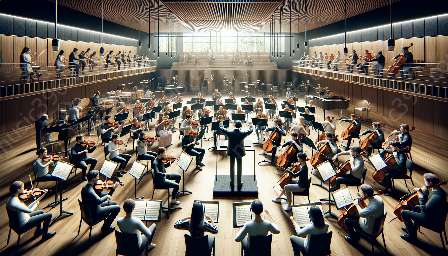Music has always been a reflection of the technological capabilities available at the time. Over the centuries, advances in technology have significantly impacted the way music is composed, arranged, and performed. In the context of orchestration and instrumentation, technology has played a crucial role in shaping modern musical compositions and performances. This topic cluster will explore the influence of technology on orchestration and instrumentation, highlighting the innovative tools and techniques that have transformed the field.
Overview of Orchestration and Instrumentation
Before delving into the role of technology, it's essential to understand the foundational concepts of orchestration and instrumentation. Orchestration refers to the art of arranging and combining different musical instruments to create a harmonious and balanced sound. A skilled orchestrator carefully selects and blends instruments to evoke specific emotions and enhance the overall musical experience.
On the other hand, instrumentation focuses on the specific musical instruments used in a composition or performance. It involves the study and selection of instruments based on their unique timbres, ranges, and expressive capabilities. Both orchestration and instrumentation are fundamental aspects of music composition and performance, offering composers and musicians a wide array of creative possibilities.
The Evolution of Technology in Orchestration and Instrumentation
Historically, orchestration and instrumentation were heavily reliant on the physical properties and limitations of musical instruments. Composers had to work within the constraints of available instruments and their inherent characteristics. However, with the advent of technology, the landscape of orchestration and instrumentation underwent a dramatic transformation.
One of the most pivotal developments in this evolution was the introduction of electronic instruments and synthesizers. These innovative devices provided composers and musicians with unprecedented control over sound creation and manipulation. Unlike traditional acoustic instruments, electronic instruments offered endless possibilities for sound modification, enabling composers to explore new sonic territories and push the boundaries of orchestration.
Additionally, advancements in recording technology and sound engineering revolutionized the way orchestral music was captured and reproduced. The ability to record, edit, and mix intricate orchestral arrangements in a studio environment allowed for greater precision and fidelity in the final sound production. This technological leap significantly expanded the creative toolkit available to composers and producers, empowering them to experiment with complex orchestrations and elaborate instrumentation.
Modern Tools and Techniques for Orchestration and Instrumentation
The integration of technology has given rise to a myriad of software and digital tools that have become indispensable in modern orchestration and instrumentation. Digital audio workstations (DAWs) have emerged as central platforms for composers to craft intricate orchestral arrangements, offering a wide range of virtual instruments and sophisticated sound libraries.
Sample libraries, powered by cutting-edge sampling technology, provide an extensive collection of high-quality orchestral sounds, enabling composers to access realistic instrument emulations and detailed articulations. These sample libraries serve as invaluable resources for composers looking to achieve authentic orchestral textures and expansive instrumentation without the limitations of physical instruments.
Furthermore, the rise of virtual orchestration has redefined the possibilities of orchestral composition. With the use of orchestral sample libraries and advanced MIDI programming, composers can create immersive and expressive orchestral scores entirely within the digital domain. This approach allows for seamless integration of electronic and acoustic elements, granting composers the freedom to explore hybrid orchestration that blends traditional instrumentation with electronic embellishments.
Live Performance and Technology Integration
Technology has also significantly influenced the realm of live orchestral performances. The introduction of digital audio technologies and electronic instrument enhancements has reshaped the way orchestras present their music to audiences. From the integration of digital effects processing to the incorporation of electronic instruments and MIDI controllers, orchestral performances have evolved to incorporate contemporary technological elements.
Moreover, the use of digital sheet music and conductor's scores displayed on electronic devices has streamlined the rehearsal and performance processes, offering enhanced readability and dynamic control over musical interpretation. This digitalization of score management has facilitated smoother communication between conductors, musicians, and production staff, leading to more efficient and collaborative orchestral performances.
Future Trends in Technology and Orchestration
Looking ahead, the intersection of technology and orchestration is poised for continued innovation and expansion. Developments in artificial intelligence and machine learning are beginning to influence the creation of orchestral music, with AI-powered composition tools offering composers new avenues for exploration and creativity.
Furthermore, the emergence of spatial audio technologies and immersive sound experiences presents exciting possibilities for the future of orchestration. By leveraging spatial audio processing and augmented reality audio platforms, composers can design multidimensional sonic environments and immersive orchestral experiences that transcend traditional stereo playback.
Conclusion
Technology has undeniably reshaped the landscape of orchestration and instrumentation, empowering composers, arrangers, and musicians with revolutionary tools and techniques. From the advent of electronic instruments and digital workstations to the proliferation of sample libraries and virtual orchestration, technology has expanded the creative horizons of orchestral music. As we continue to embrace the possibilities offered by technological advancements, the role of technology in modern orchestration and instrumentation will continue to evolve, driving innovation and creativity in the realm of orchestral music.

